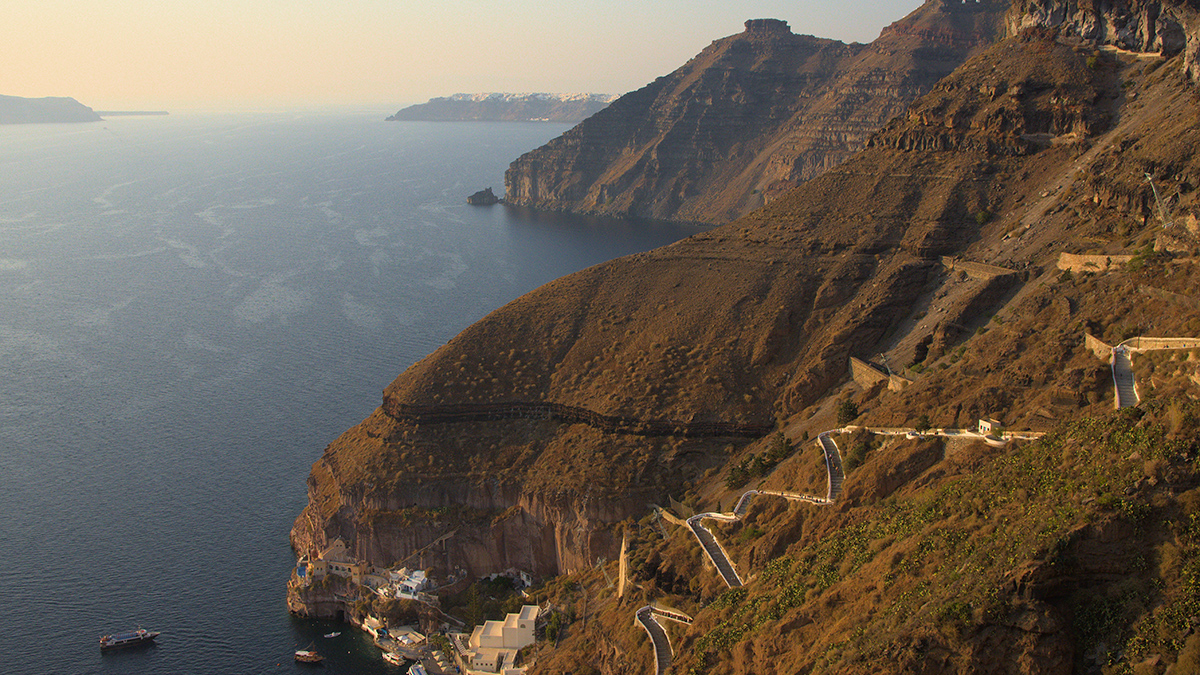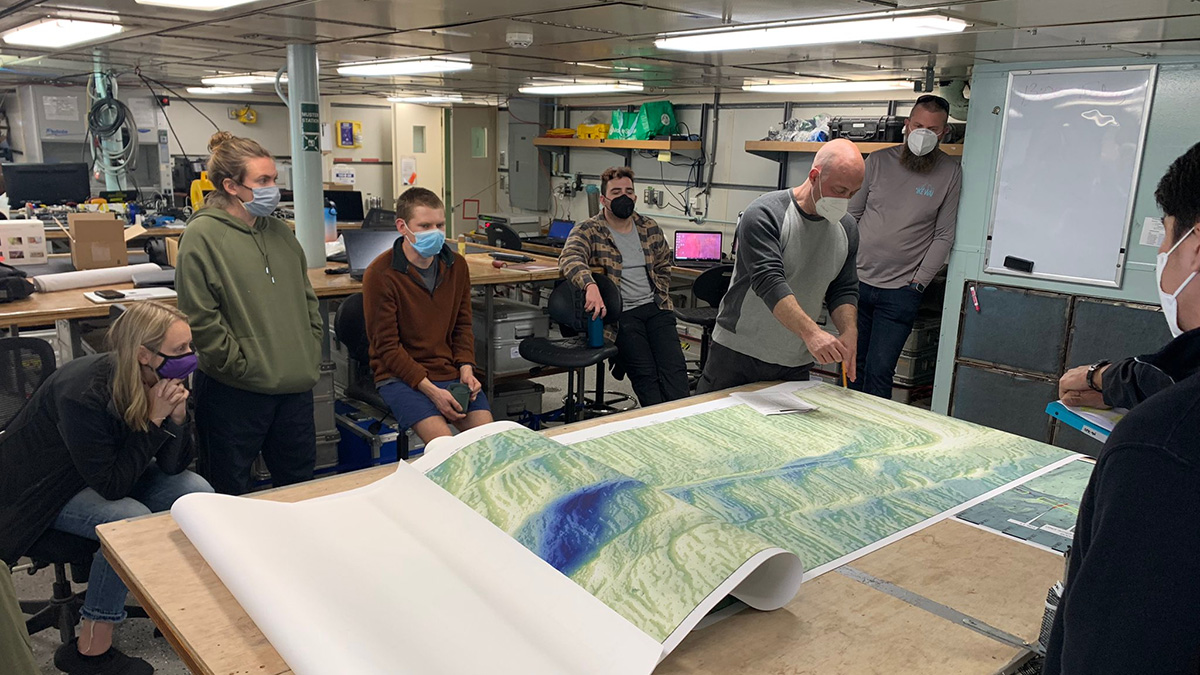A 36-million-year cycle of marine biodiversity booms and busts matches the movements of plate tectonics, linking what happens deep below the ocean to what’s happening in it.
seafloor
Decoding an Ancient Tsunami from the Ground Up
The seafloor around Santorini is helping scientists investigate forces behind the devastating Minoan tsunami.
Scientists Discover a Way of Forming Suspended Layers of Sediment
Laboratory experiments suggest that underwater gas eruptions—due to the venting of gas hydrates, for example—could trigger the formation of layers of suspended sediment in the ocean.
Supersized Potholes Discovered off South African Coast
Curious circular pits off South Africa’s Eastern Cape coast are larger than any similar feature previously recorded. Their origin remains a morphological mystery.
Tracking Marine Heat Waves
Heat waves can happen in the depths, invisible at the ocean surface.
The Depleted Mantle Merry-Go-Round
Abyssal peridotites show through their isotopic composition a complex history. From differences we can infer the existence of ultra depleted mantle and an uneven contribution to ridge magmatism.
Godzilla Gets a Forever Home on the Ocean Floor
The world’s largest oceanic core complex is named after the reptilian monster from Japanese science fiction. Parts of the seabed feature were recently christened with the beast’s anatomy.
Deep-Sea Sand and Where to Find It
Ancient underwater avalanches carried sand into the ocean’s abyss during a time when some least expected it.
Making Sense of the Great Barrier Reef’s Mysterious Green Donuts
Researchers set sail to the Great Barrier Reef to study how ring-shaped algae deposits formed and evolved, what feeds them, and the diversity of creatures that call them home.
Observing a Seismic Cycle at Sea
Scientists organized a trio of expeditions to document the buildup of stress leading to a large earthquake on a seafloor fault, developing innovations for successful seagoing research in the process.










